#Descalzas Reales (Madrid)
Text
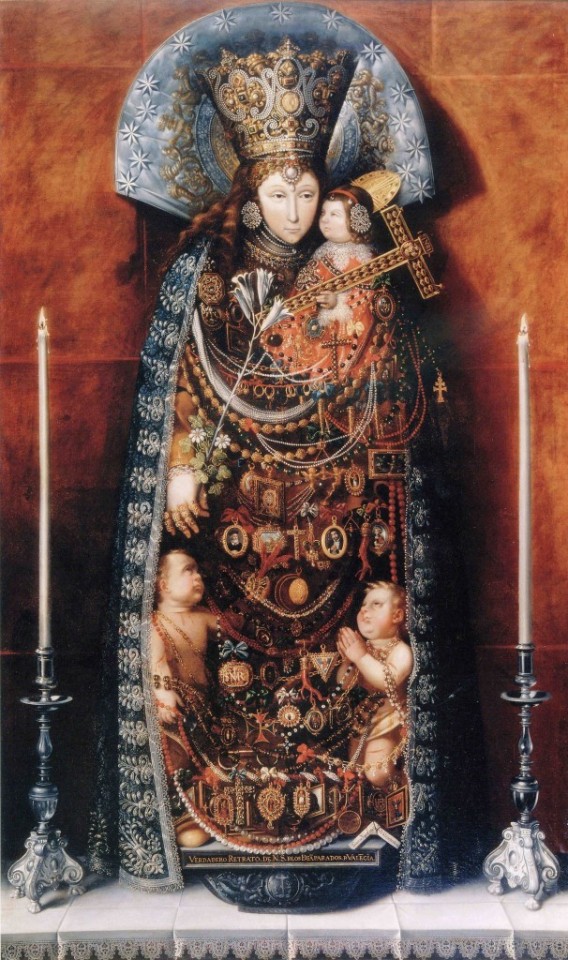
Tomás Yepes (Spanish, 1595 or 1600 – 1674)
Virgen de los desamparados, 1644, Monasterio de las Descalzas Reales
#Tomás Yepes#tomas yepes#spanish#17th century#madrid#Monasterio de las Descalzas Reales#biblical#mary
4 notes
·
View notes
Text
Juana de Austria (anónimo español) - GCR / Joanna of Austria (Anonymous Spanish Artist)
Posterior a 1573. Óleo sobre lienzo. Galería de las Colecciones Reales. Madrid.
Continue reading Juana de Austria (anónimo español) – GCR / Joanna of Austria (Anonymous Spanish Artist)
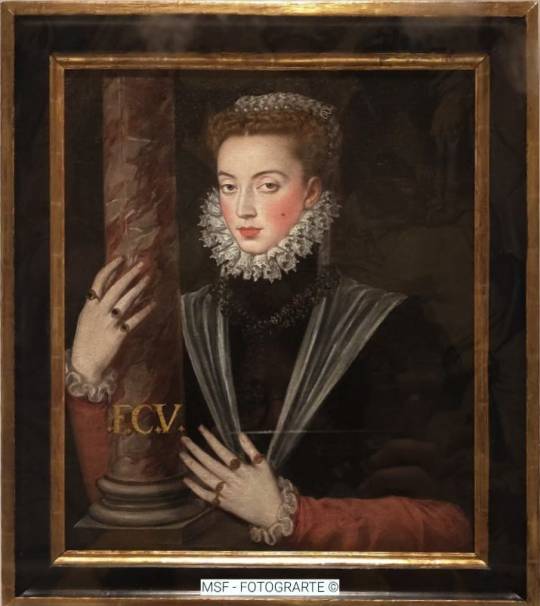
View On WordPress
#Carlos I de España y V de Alemania#Descalzas Reales (Madrid)#España#Felipe II de España#Galería de las Colecciones Reales (Madrid)#Historia#Juana de Austria#Madrid#Pintura#Siglo XVI
1 note
·
View note
Photo

Ecce Homo de Pedro de Mena (1673 no Convento de las Descalzas Reales de Madrid. Patrimonio Nacional)
23 notes
·
View notes
Text
El 22 de abril de 1616 en Madrid, fallecía Miguel de Cervantes Saavedra,

considerado la máxima figura de la literatura española y autor de la que quizás sea la primera novela de la historia, “Don Quijote de la Mancha”. Nacido en Alcalá de Henares en 1547, no existen datos sobre su educación inicial, se sabe que de muy joven se trasladó a Madrid para asistir al “Estudio de la Villa”, regenteado por el catedrático de gramática Juan López de Hoyos, quien en uno de sus libros publica 2 poesías de Cervantes. En 1569 acusado de herir a Antonio Sigura en un duelo, es buscado por las autoridades por lo que huye a Italia. Allí se pone al servicio del cardenal Giulio Acquaviva y por un tiempo se dedica a estudiar a escritores italianos. Abandona esa vida apacible para unirse como soldado al capitán Diego de Urbina a cargo de uno de los ejércitos del célebre militar español de servicio para Italia, Miguel de Moncada, a quienes acompaño a bordo de la galera Marquesa. El 7 de octubre de 1571 participó en la batalla de Lepanto, en la cual una esquirla le corto el tendón de la mano izquierda, por lo que a partir de allí se lo llamaba “El manco de Lepanto” aunque esto no era real. En 1575 mientras intentaba regresar en barco a España, una flotilla turca los intercepta, lo toman prisionero y es vendido como esclavo al griego Dali Mamí, quien lo compra por tener en su poder cartas de recomendación de la realeza, esto le hizo pensar en pedir un buen rescate y lo retuvo en Argel. Luego de 5 años de cautiverio y 5 intentos de fuga, era considerado muy conflictivo por lo que se lo encadenó y subió a un barco rumbo a Constantinopla, en ese momento el Fray Juan Gil se presentó con el dinero suficiente para liberarlo junto con otros españoles. Se instala en Portugal y allí comienza su verdadera carrera literaria escribiendo “La Galatea”, regresó a España donde trabaja como guardia, olivero y recaudador de impuestos. En ese puesto comete una sideral estafa quedándose con dineros públicos por lo que es detenido y llevado a la cárcel de Sevilla en 1597. Estando preso es cuando idea y comienza a elaborar la obra literaria máxima de la hispanidad “Don Quijote de la Mancha”. Cervantes falleció de diabetes el 22 de abril de 1616 y fue enterrado en el convento que recaudó los fondos para su liberación de Argel, el “Convento de las Trinitarias Descalzas” aunque el lugar exacto es un misterio.
6 notes
·
View notes
Text
Virtual Sketchbook #3
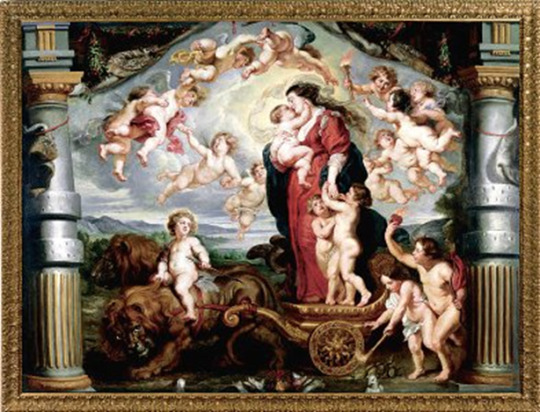
The Triumph of Divine Love by Peter Paul Rubens, 1625. Accessed 03/26/2024 https://ringlingdocents.org/divine.htm.
Describe Visual Qualities:
The Triumph of Divine Love by Flemish artist Peter Paul Rubens is a oil on canvas painting. The massive size is very eye-catching with a height of 17ft (518.2cm) and width of 12.6ft (386.1 cm). At first glance the painting consists of cheery and bright colors that create a joyful feeling. The main subject is Charity at the center, holding one of her children, highlighted with the lightest part of the painting. Two more of her children stand next to her as they ride a chariot pulled by two lions, which show contrasting shadows at the bottom of the piece. The borders also show contrasting shadows that work to pull viewers’ attention towards the center. The artwork possesses a variety of subjects such as Charity (who resembles Mother Mary), twelve putti flying in the air (winged children, Cupids), three more grounded putti one of whom is riding a lion holding an arrow, two lions, a pelican piercing its own breast to feed its young, and two intertwined snakes. The varying subjects do not create a chaotic effect, instead a sense of unity is felt through the placement of light and dark areas as well as the central focal point.
How does work make you feel:
During my visit to the Ringling Museum of Art, The Triumph of Divine Love piqued my interest the most. Its size and complexity first caught my attention. I’ll admit I am not the biggest fan of old religious art pieces, but the beauty of this painting cannot be denied. The central focal point of the female figure cradling her baby with a look of fondness and joy reminded of my maternal feelings of love for my own baby. Viewing the piece inspires feelings of happiness and contentment. I also felt a sense of happiness while viewing the work.
The upbeat tone versus other more graphic sad scene of most paintings of this era is what made me admire it.
Research:
Peter Paul Rubens created The Triumph of Divine Love in the 17th century. Rubens was one of the most well-known Baroque artists of that time. Rubens was commissioned by Archduchess Isabella, “to design the 20 cartoons for the tapestry series of the Triumph of the Eucharist for the convent of the Descalzas Reales in Madrid” (Vlieghe).
The Triumph of Divine Love was one of this series. As a devote Catholic, Ruben incorporated allegory of religious event into many of his works. “Europeans had so linked the body of Christ with the body social and political that the Eucharist became "the emblematic focus of the struggle" between Catholics and Protestants…” (Harrie). In the Eucharist cycle, the artist focused on portraying victory of good over evil. Specifically in The Triumph of Divine Love, Rubenscreates a scene of celebration after, “the defeat of evil in the world by religious or divine love” (Anderson).
Personal Critique:
After my research I view Ruben The Triumph of Divine Love in a much different way. The symbolism shown throughout tells a story of, as the title refers, triumph. The putti are a way to show profane love. The snakes intertwined at the bottom represent evil with the flaming heart above as the “Sacred Heart” referring to Jesus’s love for humanity. The positioning of these symbols infers the defeat of evil with faith. Prior to this project, I lacked knowledge to identify the meaning behind the subjects. The painting is a clear representation of the cultural ideals of that time, and I have learned a great deal from looking into the purpose of its creation. The skill needed to execute this timeless piece of art shows the mastery Rubens possessed and why he was one of the best artists of the 17th century. I can only imagine the effect of seeing all of Rubens’ Eucharist series together.
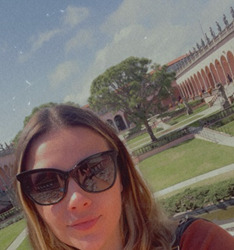
Selfie of my in the beautiful Ringling Courtyard.
Cites Sources:
Anderson, Robert. The Triumph of Divine Love, 2000, accessed 29 March 2024, https://ringlingdocents.org/divine.htm.
Harris Jeanne. Discussion of Léonard Limosin's enamel Triumph of the Eucharist and of the Catholic Faith, Sixteenth Century Journal; Spring2006, Vol. 37 Issue 1, p43-57, 15p, accessed 29 March 2024, https://web.p.ebscohost.com/ehost/detail/detail?vid=5&sid=657838c2-4aef-4ee5-9605-b9bffb78a770%40redis&bdata=JkF1dGhUeXBlPXNoaWImc2l0ZT1laG9zdC1saXZl#AN=509859203&db=hus.
Vlieghe, Hans. "Rubens, Peter Paul." Grove Art Online. 2003. Oxford University Press. Date of access 29 Mar. 2024, https://www.oxfordartonline.com/groveart/display/10.1093/gao/9781884446054.001.0001/oao-9781884446054-e-7000074324?rskey=4WqXlf&result=1.
1 note
·
View note
Text
Chilenos.......... les voy a contar un secreto.......... mi elijah sueldo es 980 mil trillones de millones de dólares al segundo .......... con real madrid......
Jajajaja Jajajaja Jajajaja Jajajaja Jajajaja Jajajaja Jajajaja Jajajaja Jajajaja Jajajaja Jajajaja Jajajaja Jajajaja Jajajaja Jajajaja Jajajaja Jajajaja Jajajaja Jajajaja Jajajaja
Por ejemplo.......... chilenos maratón de películas........ dc comic y marvel quiere decir warner bros...........
Jajajaja Jajajaja Jajajaja Jajajaja Jajajaja Jajajaja Jajajaja Jajajaja Jajajaja Jajajaja Jajajaja Jajajaja Jajajaja Jajajaja Jajajaja Jajajaja Jajajaja Jajajaja Jajajaja Jajajaja
Chilenos les presento mis esposas..........
Jajajaja Jajajaja Jajajaja Jajajaja Jajajaja Jajajaja Jajajaja Jajajaja Jajajaja Jajajaja Jajajaja Jajajaja Jajajaja Jajajaja Jajajaja
Gal gadot mide 1 metro y 96 cm descalza......... margot Robbie mide 1 metro y 94 cm descalza........... scarlet johanson mide 1 metro y 93 cm descalza.......... ana de armas mide 1 metro y 93 cm descalza......
Jajajaja Jajajaja Jajajaja Jajajaja Jajajaja Jajajaja Jajajaja Jajajaja Jajajaja Jajajaja Jajajaja Jajajaja Jajajaja Jajajaja Jajajaja Jajajaja Jajajaja Jajajaja Jajajaja Jajajaja

0 notes
Text




Felipe and Letizia retrospective: December 2nd
2003: Funeral ceremony for seven intelligence officers who were killed in Iraq at the Madrid headquarters of the secret service CNI.
2004: VIII Edition of ‘the Foundation for Cooperation and Development of Assistential Activities’ awards (CODESPA)
2005: Commemoration of the 25th anniversary of the YMCA in Spain
2007: Funeral for Civil Guard agent Raúl Centeno Bayón
2008: Visit to A Coruña
2009: Inauguration of His Excellency the President of Costa Rica, Oscar Arias Sánchez, as Doctor Honoris Causa by the University of Salamanca
2010: Closing of the 13th State Volunteer Congress
2013: National Sports Awards
2014: Official Visit to Germany
2015: Delivery of Gold Medal for Merit in the Fine Arts 2014 in Sevilla & Meeting with the President of Colombia, Juan Manuel Santos Calderón
2016: “International Symposium: Sustainable Food Systems in Favor of Healthy Diets and Improved Nutrition” at FAO’s headquarters in Rome, Italy
2019: Received the presidents of Ecuador and Costa Rica & Offered a reception to Chiefs of State visiting Spain to take part on COP25
2021: Visited Colombia to attend the World Law Congress Colombia 2021 & Event of reopening to the public of the collections of the “Real Monasterio de las Descalzas Reales”
2022: Meeting with Kristalina Georgieva, managing director of the International Monetary Fund (IMF) at the IMF Headquarters in Washington DC, USA; Held a meeting with Georgetown University’s president, John J. Degioia and attended a lecture & Dinner celebrating the 100th anniversary of the Masters of Science in Foreign Service (MSFS) Program
F&L Through the Years: 1096/??
#King Felipe#Queen Letizia#King Felipe of Spain#Queen Letizia of Spain#King Felipe VI#King Felipe VI of Spain#F&L Through the Years#December2
0 notes
Text
Descubriendo la Belleza y la Historia de la Plaza de las Descalzas en Madrid
Descubriendo la Belleza y la Historia de la Plaza de las Descalzas en Madrid
Madrid, la capital de España, es una ciudad que rebosa historia y cultura en cada esquina. Entre sus numerosos tesoros se encuentra la Plaza de las Descalzas, un rincón emblemático ubicado en pleno corazón de la ciudad. En este artículo, exploraremos en detalle la Plaza de las Descalzas, el impresionante Monasterio de las Descalzas Reales que la preside, y cómo llegar hasta este lugar lleno de…
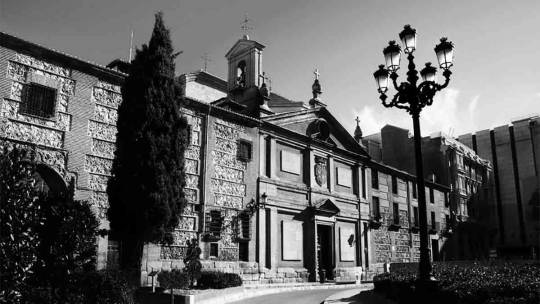
View On WordPress
0 notes
Text


The Triumph of Divine Love by Peter Paul Rubens
What is it made of? Oil on canvas
How big is it? Height: 17ft Width: 12.6ft
What colors and shapes are used? Two columns on each side of the painting are gray with gold detailing. On the left are two bronze-colored lions, one pulling a golden pedestal on wheels by a red harness and mounted by a small child. On the golden pedestal is a woman wearing a red dress with a blue cover that is partly on. She is fair-skinned and has long, dirty blonde/ light brown hair. The woman is accompanied by two younger children on her left side, two close behind the pedestal and one she embraces in her arms. The background is vast, with green trees, gray/blue mountains, and a beach shoreline or maybe a lake in the distance. In the sky are 11 cherubs, hand in hand, forming a circle around the woman's head. The clouds are spiraling in blues and grays above the cherubs, where at the center is an opening of yellow light.
What subjects (if any) are represented? The painting celebrates a victory, the defeat of evil in the world by religious or divine love represented by the three 'theological virtues' resembling the Virgin Mary.
How was the work designed? It was designed along with eleven other paintings of The Triumph of the Eucharist and was planned to be a gift for the convent Descalzas Reales in Madrid.
Is it balanced? It is very well balanced with the colors and distribution of the objects included. There's nothing that is taking away from or distracting in the painting. As a viewer, you can enjoy each part of the painting and take in the exquisite artistry that the painting clearly shows.
What is emphasized? Rhythm? Proportion? Rhythm is a huge part of this painting, with the lions leading your eyes to the woman and the clouds spiraling above the circling cherubs.
Contrast? Does it have unity and variety? There is some unity and value where the same level of value contrast was used. The lighter colors used toward the top of the painting create a focal point against the darker colors that the bottom of the painting shows. This was used perfectly in order to create balance.
How does the work make you feel? I thoroughly enjoyed viewing the painting in person. I was in awe while viewing it.
How or why does it evoke these feelings? The size was a huge factor. I definitely wasn't expecting it to be as large as it was. It's impressive to create a large painting and achieve such a high level of artistry. The level of detail also really shows the level of passion that was put into the painting.
What movement is the artwork associated with? 17th Century, Baroque art.
Example: If it's from the Renaissance, who commissioned it? If it's a portrait, who is the subject? In 1625, Archduchess Isabel Clara Eugenia commissioned Rubens to design a series of twenty tapestries.
What does the artwork say about the artist that made it? That Rubens is clearly a passionate and astounding artist.
Can you tell what the artist was trying to say? I can tell what the artist was trying to say about divine love. How divine love is love without condition, boundary, and change.
How clearly does the artist get their message across? It includes cherubs that symbolize love, while the painting visually expresses happiness, joy, and unconditional love. Showing how intense love radiates happiness without uncertainty.
I can't say anything bad about this painting. The message, visuals, size, the painting skill itself is impressive. One of my favorite parts of the painting is the cherubs because they add so much character and playfulness to the painting. Baroque paintings always show such confidence and boldness. It makes sense why this period was such an influence all across Europe.
0 notes
Text
A trip to The Ringling Museum
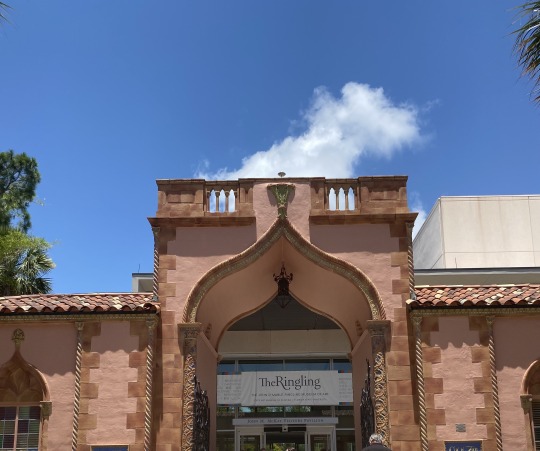

"The Triumph of Divine Love" by Peter Paul Ruben
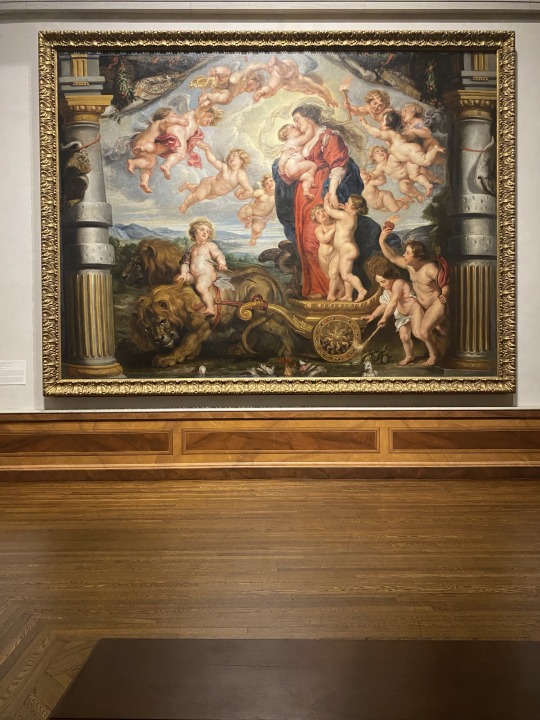
The Triumph of Divine Love by Peter Paul Ruben was made in Ca. 1625. Oil on canvas, 152 x 204 inches. (386.1 x 518.2 cm). It is much taller than a human, sits high like a giraffe, and is as huge as a shed. The painting has warm realistic colors, such as, nude, blue, green, and brown. If you look deeper, you will see a rich red, rich metal like silver and fancy gold. There are a bunch of human forms, animals, curvy patterns, and two pillars in the shape of squares and cylinders made of cement like material. The subject for this picture can go a long way. Humanity is the main subject of how motherhood for Virgin Mary has played a huge part, as she is a single human being with her child being protected. She is not only being protected by God on her right side of her feet who draws blood from its breast, sacrificing His own safety for its young (the bird), but also by a group of cherubs surrounded together around her body. The lions carry her with one of the cherubs hanging tight on the back of the lion on a chariot, which are ready to set her free with peace away from the wicked snakes (the devils). The painting is designed in Baroque style, characterized by drama and emotional density. It features a lot of movement and energy with several twisting and turning dramatically. I believe this painting by Ruben is balanced because the figures are arranged in a way that creates a sense of symmetry as the colors are evenly distributed. The main part of the picture emphasized is the center of the picture to draw importance to the viewers as the cherubs float together in a circular halo form. Unity and variety are often used visually in this image. The chestnut brown bird near Mary that is in defense mode is big with a long neck, large head, and wings. Mary is realistic and tall with an average-sized body. The one healthy baby size is like a 11-month-old and round and Chubby and as long as a 1-year-old. The 16 cherubs are little with a heavy like weight on them. The brown lions are massive with wide heads and muscular shoulders. The white dove, which symbolizes love, peace, and hope, has a round body and a small head with a short beak, and the two black snakes are thin and long.
Looking at the painting, God’s love never fails. It makes me feel so safe to keep going through life even though devils may try to bring me down. It is an emotional painting that evokes a powerful message that includes God’s presence. The Devils tried interfering and slithering through to try to take our peace away from Mary. In the real world, devils try it hardest to make us forget about our faith in God. The thought of when looking straight at Mary, I put myself in her shoes and what came to my headfirst was “The Lord will rescue me from every evil deed and will bring me safely to His heavenly kingdom; to His heavenly kingdom; to him be the glory forever and ever, Amen (2 Timothy 4:18).”
The Triumph of Divine Love by Ruben is linked with the life of Renaissance and Baroque movement, which appeared in Europe in the 17th century. In 1625, Archduchess Isabel Clara Eugenia commissioned Rubens to design about 20 tapestries for the Monastery of the Descalzas Reales in Madrid. When Ruben painting became famous, it was so clear and still is clear enough to know he was open minded about Christ. Ruben was trying to promote and strengthen belief in Christianity in a church.
I picked this mind-blowing painting because the first thing that caught my eye was the two lions looking in two different directions. When I see lions in person or in images, I tend to feel strong. I adore lions so much that I am proud that my birth zodiac sign is represented as a lion. The next thing caught my eye was the protection Mary had while holding her baby tight enough as she balances standing up on the chariot until she made it out away from the wicked devils, the snakes.
0 notes
Text
The Ringling Museum of Art

Went to The Ringling Museum of Art the other day and wrote a review on an art piece that touched me.
The Triumph of Divine Love Review
By: Samantha Palmer
ARH2000: Art Appreciation 20630
Professor: Katherine Bzura
March 19, 2023

Physical Qualities
The art piece The Triumph of Divine Love by Peter Paul Rubens hangs on the wall at the Ringling Art Museum in Sarasota, FL. It is an oil painting that was painted back in 1625 on a canvas that is a little over 12 and half feet in height by 17 feet in width. It takes up an entire wall on itself showing the large proportions that Rubens presents in the art piece. All the images in the artwork are life size. The painting was done in a renaissance period with the use of religious mythology as its subject. At first glance there is a beautiful woman that is the centerpiece of the artwork with children surrounding her that are angels. Once we look deeper into the piece we see the great amount of symbolism that Rubens used when creating this beautiful piece of moving artwork. Although, the woman in the middle is the centerpiece Rubens balances out the artwork with lions and the angel children flying around her.
Personal Feelings
When I saw The Triumph of Divine Love for the first time at the Ringling Museum of Art it took my breath away. I had to sit down and stare at and take in all of its beauty. Reubens used warm colors so I got this sense of calmness and love from the artwork. It was just so moving showing a beautiful woman that is a mother with children that are angels flying around her and one that she is holding showing love to. The longer I sat looking at the artwork I started to notice the symbolism in the piece of work. I noticed that there was a child sitting on a lion with a spear in its hand, and I also noticed a child with flames from a torch pushing it near a serpent on the ground. It made me want to know more about the story line for this painting.
I think the reason the painting was able to draw me in and move me is not only because of the art piece being beautiful but because of how it made me feel. I am a mother of a son and I was told many years ago that I would never bear a child. Only by the grace of God was I unexpectedly blessed with a son. This art piece reminded me of motherhood and how much love goes into being a mother. I think like anything the more we can relate to ourselves or find meaning in something the more feelings we have from it.
Background
The Triumph of Divine Love was painted in 1625 by Paul Peter Rubens in Madrid. Rubens was born in Germany on June 28, 1577. He was a diplomat, scholar, and an artist. Rubens was described as, “the painter of princes and the prince of painters” (Peter Paul Rubens, 2023). Rubens was hired by Archduchess Isabel Clara Eugenia in 1625 to paint twenty tapestries for the Monastery of the Descalzas Reales. The Triumph of Devine Love is one of them (Museo Del Prado, 2023). The meaning behind this artwork is to show the victory of over evil in the world. The beautiful woman in the painting represents Charity, one of the three virtues, or as to what some consider the Mother of the Gods. The lions in the painting are the lions that pull Charity’s chariot and the serpents that represent evil are being burned by the flaming heart and pierced by the arrow of love (Anderson, R., 2000). I knew from the moment I first laid eyes on the painting that there was a tremendous amount of symbolism in it. The painting dates back to the Renaissance period where there were battles between Protestants and Catholics. At that time period there were numerous religious paintings referencing back to the religious methodology.
Conclusion
I chose The Triumph of Devine Love to do my review on because it touched me the most. It took my breath away, and not only because of its beauty, warm colors, balance, and symbolism but because I felt myself in the piece of artwork. I felt the love between a mother and a child. I think this piece of artwork is important to society because it shows a piece of history and how important religion was back in that era. This artwork is a huge panel canvas that takes up an entire wall demanding your attention with the proportions of the beings in the artwork displaying another aspect of its importance. I think The Triumph of Devine Love is gorgeous and speaks to you. I think that is why Mr. Ringling purchased the piece and displayed it for all to see.
References
Anderson, R. (2000). The Triumph of Divine Love. http://ringlingdocents.org/divine.htm.
Museo Del Prado (2023). The Triumph of Divine Love. https://www.museodelprado.es/en/the-collection/art-work/the-triumph-of-divine-love/34e44f15-389e-4782-9538-092b3e08a44a.
Peter Paul Rubens. (2023). World History: The Modern Era. Retrieved March 19, 2023, from https://worldhistory2-abc--clio-com.eu1.proxy.openathens.net/Search/Display/316355.
0 notes
Text
LA REINA DESCALZA
Esta mañana he terminado de leer:
La reina descalza
Ildefonso Falcones
En enero de 1748, una mujer negra deambula por las calles de Sevilla. Atrás ha dejado un pasado esclavo en la lejana Cuba, el hijo al que nunca volverá a ver y un largo viaje en barco hasta las costas españolas. Caridad ya no tiene un amo que le dé órdenes, pero tampoco un lugar donde cobijarse cuando se cruza en su camino Milagros Carmona, una joven gitana de Triana por cuyas venas corre la sangre de la rebeldía y el arte de los de su raza. Las dos mujeres se convierten en inseparables y, entre zarabandas y fandangos, la gitana confiesa a su nueva amiga su amor por el apuesto y arrogante Pedro García, de quien la separan antiguos odios familiares. Por su parte, Caridad se esfuerza por acallar el sentimiento que está naciendo en su corazón hacia Melchor Vega, el abuelo de Milagros. Pero cuando un mandato real convierte a todos los gitanos en proscritos, la vida de Milagros y Caridad da un trágico vuelco. Aunque sus caminos se separan, el destino volverá a unirlas en un Madrid donde confluyen contrabandistas y cómicos, nobles y villanos; un Madrid que se rinde a la pasión que emana de las voces y bailes de esa raza de príncipes descalzos.

0 notes
Photo

Christ Carrying the Cross, Sebastiano del Piombo, 1515, Art Institute of Chicago: European Painting and Sculpture
This painting by represents one of the most popular compositions invented by one of the most distinguished painters working in Rome during the High Renaissance. In the 1510s, following an early period in Venice, Sebastiano del Piombo traveled to Rome, where he was drawn into the lively atmosphere of competition between the two great luminaries of the period, Michelangelo Buonarroti and Raphael. Michelangelo took Sebastiano under his wing, teaching him his monumental style and providing drawings for some of Sebastiano’s major commissions. Following Raphael’s death in 1520, the painter and historian Giorgio Vasari stated that“first place in the art of painting was unanimously granted by all, thanks to the favor of Michelangelo, to Sebastiano.” Christ Carrying the Cross draws upon recent developments of an enormously popular iconography by artists including Giovanni Bellini, Giorgione, and Andrea Mantegna, among others. Here, Simon of Cyrene assists Jesus, emphasizing the heavy weight of the cross on his shoulders. A Roman soldier stands behind, his jeering face just visible in the darkness. In the background, the tightly packed composition opens up onto a crowd assembling at the foot of the hill of Golgotha, with two crosses barely visible. The luminous landscape is a hallmark of the artist’s Venetian training. The painting’s dramatic visual impact is a result of the powerful diagonals of the cross; the dynamic, almost sculptural quality of Christ’s clothing; and the pathos of his expression. The popularity of Sebastiano’s composition is reflected in the number of surviving variants that he created over the course of his career. The Art Institute’s version is an autograph replica of a painting—now in the Museo del Prado, Madrid—made for Jerónimo Vich y Valterra, the Spanish ambassador to Rome. Other versions survive in the State Hermitage Museum, Saint Petersburg; the Monasterio de las Descalzas Reales, Madrid; and the Szépmüvészeti Múzeum, Budapest. Lacy Armour, Ada Turnbull Hertle, Mary Swissler Oldberg Acquisition, Charles H. and Mary F. S. Worcester Collection funds; Wirt D. Walker Trust; Alyce and Edwin DeCosta and the Walter E. Heller Foundation Fund; Estate of Walter Aitken; Frederick W. Renshaw Acquisition, Marian and Samuel Klasstorner funds; Edward E. Ayer Fund in Memory of Charles L. Hutchinson; Lara T. Magnuson Acquisition, Director's funds; Samuel A. Marx Purchase Fund for Major Acquisitions; Edward Johnson, Maurice D. Galleher Endowment, Simeon B. Williams, Capital Campaign General Acquisitions, Wentworth Greene Field Memorial, Samuel P. Avery, Morris L. Parker, Irving and June Seaman Endowment, and Betty Bell Spooner funds
Size: 118 × 92 cm (46 7/16 × 36 1/4 in.)
Medium: Oil on panel
https://www.artic.edu/artworks/234781/
12 notes
·
View notes
Text
Arturo has pensado esto ?????...... que eres picante y flaite........
Yo elijah soy el presidente del real Madrid y presidente de la uefa.......... pero hay una sorpresa yo elijah soy hollywood y wall street........
Por ejemplo............. nos saludamos de un beso en la boca con lengua.......
Jajajaja Jajajaja Jajajaja Jajajaja Jajajaja Jajajaja Jajajaja Jajajaja Jajajaja Jajajaja Jajajaja Jajajaja Jajajaja Jajajaja Jajajaja Jajajaja Jajajaja Jajajaja Jajajaja Jajajaja Jajajaja Jajajaja Jajajaja Jajajaja Jajajaja
Gal gadot mide 1 metros y 97 cm descalza............ margot Robbie mide 1 metro y 95 cm descalza............ scarlet johanson mide 1 metro y 94 cm descalza......
Jajajaja Jajajaja Jajajaja Jajajaja Jajajaja Jajajaja Jajajaja Jajajaja Jajajaja Jajajaja Jajajaja Jajajaja Jajajaja Jajajaja Jajajaja Jajajaja Jajajaja Jajajaja Jajajaja Jajajaja Jajajaja Jajajaja Jajajaja Jajajaja Jajajaja

0 notes
Photo

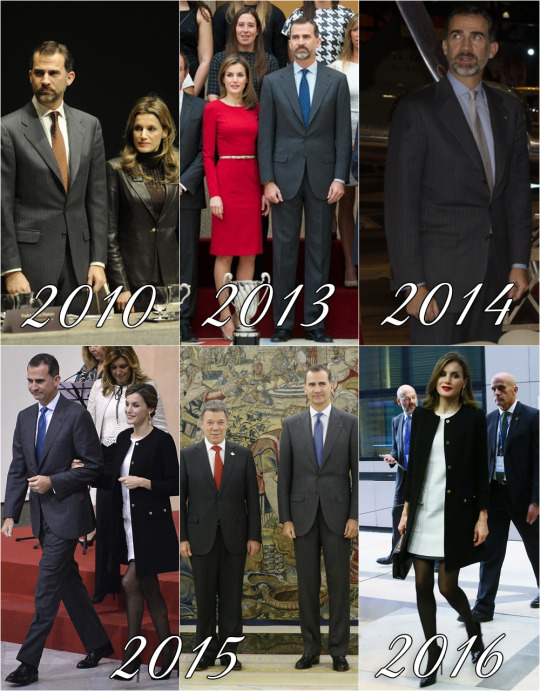

Felipe and Letizia retrospective: December 2nd
2003: Funeral ceremony for seven intelligence officers who were killed in Iraq at the Madrid headquarters of the secret service CNI.
2004: VIII Edition of ‘the Foundation for Cooperation and Development of Assistential Activities’ awards (CODESPA)
2005: Commemoration of the 25th anniversary of the YMCA in Spain
2007: Funeral for Civil Guard agent Raúl Centeno Bayón
2008: Visit to A Coruña
2009: Inauguration of His Excellency the President of Costa Rica, Oscar Arias Sánchez, as Doctor Honoris Causa by the University of Salamanca
2010: Closing of the 13th State Volunteer Congress
2013: National Sports Awards
2014: Official Visit to Germany
2015: Delivery of Gold Medal for Merit in the Fine Arts 2014 in Sevilla & Meeting with the President of Colombia, Juan Manuel Santos Calderón
2016: “International Symposium: Sustainable Food Systems in Favor of Healthy Diets and Improved Nutrition” at FAO’s headquarters in Rome, Italy
2019: Received the presidents of Ecuador and Costa Rica & Offered a reception to Chiefs of State visiting Spain to take part on COP25
2021: Visited Colombia to attend the World Law Congress Colombia 2021 & Event of reopening to the public of the collections of the “Real Monasterio de las Descalzas Reales”
F&L Through the Years: 881/??
#King Felipe#Queen Letizia#King Felipe of Spain#Queen Letizia of Spain#King Felipe VI#King Felipe VI of Spain#F&L Through the Years#December2
1 note
·
View note
Photo




Through the Years → Queen Letizia of Spain (2,089/∞)
2 December 2021 | Queen Letizia of Spain arrives to the reopening of 'Real Monasterio De Las Descalzas Reales' in Madrid, Spain. (Photo by Carlos Alvarez/GC Images)
4 notes
·
View notes